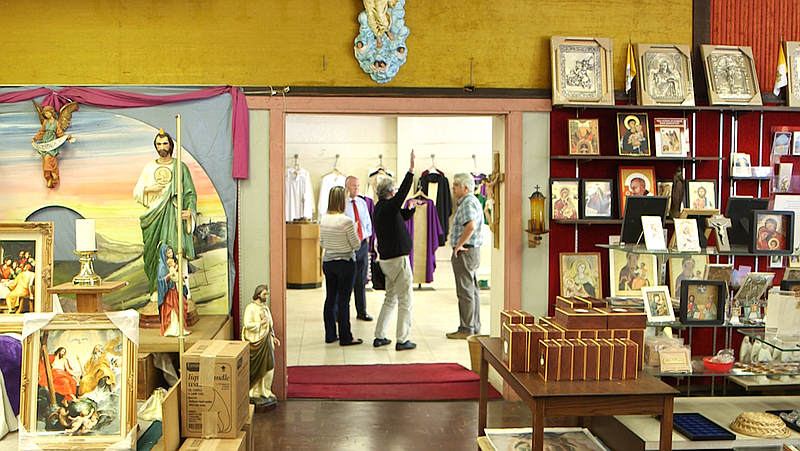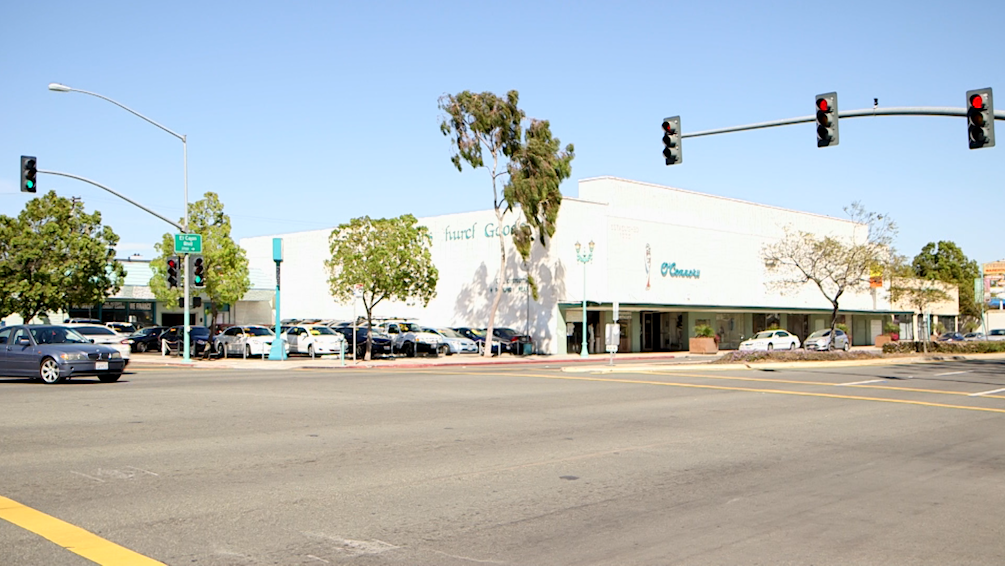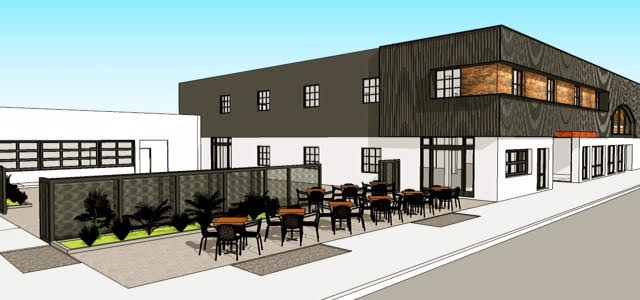Video Credit: Brian Myers, Media Arts Center San Diego
A new outdoor eatery is coming to El Cajon Boulevard in San Diego’s mid-city area. Think Crack Shack — a trendy fried chicken restaurant that hatched in Little Italy last November. Patrons order at a window then find seating on an elaborate patio, complete with a bocce ball court.
But Stacy Spector and Wendell Callahan, the team sketching out the plan, aren’t San Diego’s next celebrity chefs. They run Juvenile Court and Community Schools for the County Office of Education and their restaurant — well, it isn’t theirs at all.
Students will run the restaurant come fall.
“It’s their responsibility to not only run the business, but to procure the food, monitor what’s waste, what’s overage, communicate a brand,” Spector said while going over plans for the large-scale production kitchen.
The restaurant and kitchen are part of an educational complex replacing an old car dealership and church goods store on El Cajon Boulevard near Interstate 15. The site sits on the border of Normal Heights and City Heights.
|
The complex’s unveiling, tentatively scheduled for September, will mark a grand re-opening of sorts for the county’s alternative schools. The campuses serve students who are homeless, teen mothers, and those involved in the criminal justice system or who would otherwise benefit from being in a non-traditional school setting.
For the past few years, Spector and her team have been visiting schools throughout the United States that challenge traditional notions of teaching and learning. The result of their note taking is ECB — what they’re calling the campus until students arrive and rename it.
That’s the whole concept. The students will shape the school — its campus and curriculum — as they shape their individual career paths.
“Traditionally, when schools are built, the school is built and then the type of learning is fit into that box, and schooling is what adults say learning should be,” Spector said. “This is an opportunity for us to have a space that is, right now, an empty shell.”
So, instead of sitting in rows of desks, the students might build modular furniture they can rearrange based on the task at hand. That might lead to an apprenticeship with a local furniture maker.
The metalworking machines that have long funneled students in alternative schools into union jobs at NAASCO’s shipbuilding business on the bay will still be available, but they’ll share floor space with 3-D printers and other new tools.
“This property supports not only the new direction of JCCS, but really the new direction of learning for students,” Spector said.
She’s referring to project-based learning, a concept seen locally at High Tech High and at schools such as NuVu Studio in Boston, where students developed a prosthetic hand that helps young children create art.
Students identify real-world problems and work with mentors, often industry professionals, to build objects or flesh out ideas that might solve them. They might get a critique instead of a letter grade. (Spector said the county’s students will agree to specific outcomes with their instructors and will have to demonstrate they’ve met those goals.)
“It could very well be that as students are identifying and solving problems within their community, that they are also creating their own pathways that don’t yet exist,” Spector said. “And that’s pretty exciting stuff.”
 Staff from the San Diego County Office of Education and a consultant from Harvard tour the O’Connor’s Church Goods building on El Cajon Boulevard, where a new school is planned, March 23, 2016. | Photo Credit: Megan Burks, KPBS
Staff from the San Diego County Office of Education and a consultant from Harvard tour the O’Connor’s Church Goods building on El Cajon Boulevard, where a new school is planned, March 23, 2016. | Photo Credit: Megan Burks, KPBS
But for all of that to happen, the rosaries and other merchandise at O’Connor’s Church Goods will have to go. Decades of peeling paint will have to be sandblasted away. Drop ceilings will come down to reveal original wood beams.
Like the building, the surrounding neighborhood is a diamond in the rough and getting shinier every day.
When JCG Development bought the building last year, it planned to bring a trendy coffee shop, event space and maker studios to the area.
Neighbors hoped JCG could do here what it did on the other end of El Cajon Boulevard. Many credit the group’s revitalization of the Lafayette Hotel in University Heights with spurring a renaissance along the boulevard.
So when neighbors discovered the County Office of Education was moving in instead, some weren’t too happy. The $692,000 lease will keep the Juvenile Court and Community Schools complex there for a decade.
But JCG’s David Iwashita said the community will still get what it expected. The restaurant and coffee cart will be open to the public. Neighbors can rent the school’s performance space for events and meetings. Caterers can rent the kitchen. And artisans can use the school’s tools after hours, maybe even selling their wares on site.
“The vision that we originally created is staying intact,” Iwashita said. “And now we have a long-term partner to really help us bring that vision to fruition.”
Spector said for the academic vision to work — for students to get real-world experience — the line between community and school should be blurry anyway.
“Neighbors should be excited, and they should be not only asking to come in but demanding to be a part of who we are and what we do,” Spector said.
“They should not be worried about juvenile delinquents,” she added. “These are students and families who want no different than any other family and student. ‘I want to be able to learn. I want to be able to explore my ideas.’”
Spector is betting the ideas students hatch here will enrich their lives — and the neighborhoods where they live and work for years to come.
In the short term, they’ll bring some much-wanted coffee to this neglected end of El Cajon Boulevard.


